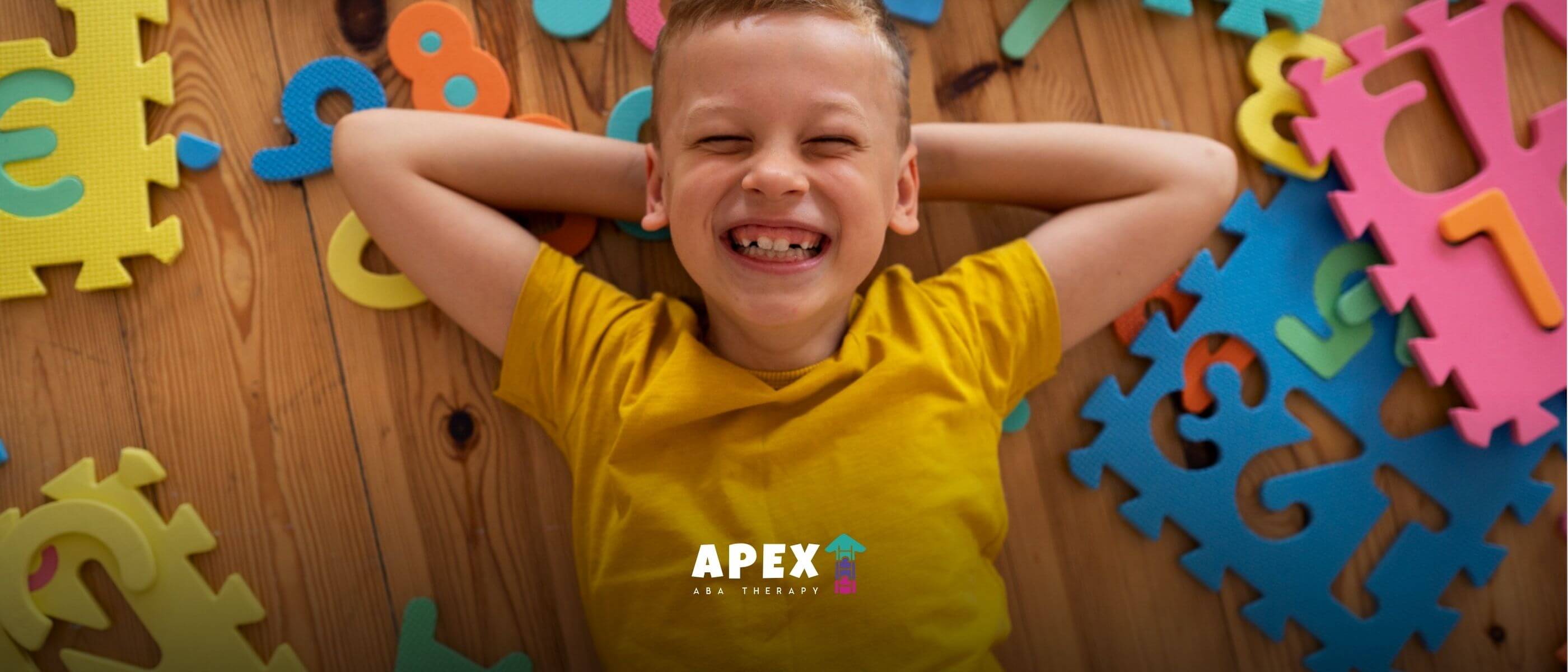Stimming Without Autism: Non-Autistic Repetitive Behaviors
Traditionally, stimming has been associated with autism, but did you know that many neurotypical people also engage in stimming behaviors? In this article, we'll take a closer look at stimming without autism, what it is, and why it's okay.
.jpg)
Stimming Without Autism: Non-Autistic Repetitive Behaviors
Understanding Repetitive Behaviors
Repetitive behaviors are a common occurrence in both autistic and non-autistic individuals. It is important to understand what repetitive behaviors are and how they can manifest differently in these two groups.
What are Repetitive Behaviors?
Repetitive behaviors, also known as stereotypic behaviors or stims, refer to a wide range of actions or movements that are repeated in a consistent manner. These behaviors can be simple or complex and may involve actions such as hand flapping, rocking, or repeating certain words or phrases.
Repetitive behaviors serve various purposes for individuals, including self-regulation, sensory stimulation, expression of emotions, or as a way to cope with anxiety or stress. It's essential to recognize that repetitive behaviors are not inherently negative or harmful; they are a natural part of human behavior.
Differentiating Between Autistic and Non-Autistic Repetitive Behaviors
While repetitive behaviors are commonly associated with autism, it's important to note that they can also occur in individuals without autism. Understanding the differences between autistic and non-autistic repetitive behaviors can help provide insights into the underlying causes and appropriate management strategies.
Differentiating between autistic and non-autistic repetitive behaviors can help promote understanding and avoid misconceptions. It's important to approach repetitive behaviors in a non-judgmental manner and recognize that they can be present in individuals with and without autism.
By understanding the nature of repetitive behaviors and the differences between autistic and non-autistic presentations, we can foster acceptance and support for individuals who engage in these behaviors.

Non-Autistic Repetitive Behaviors
While repetitive behaviors are often associated with autism, it's important to recognize that these behaviors can also occur in individuals without autism. Understanding non-autistic repetitive behaviors can help shed light on a broader range of human experiences. This section explores common non-autistic repetitive behaviors and possible causes and triggers associated with them.
Exploring Common Non-Autistic Repetitive Behaviors
Non-autistic repetitive behaviors can manifest in various ways and serve different purposes for individuals. Some of the common non-autistic repetitive behaviors include:
- Nail biting: This behavior involves biting or chewing on nails, often as a response to stress, anxiety, or boredom.
- Hair twirling: Twirling or playing with hair is a repetitive behavior that can serve as a self-soothing mechanism or a way to focus attention.
- Pacing: Pacing back and forth is a repetitive behavior that may occur when individuals are deep in thought, restless, or trying to relieve stress.
- Pen clicking: Clicking a pen repeatedly is a common repetitive behavior that may serve as a way to release nervous energy or aid concentration.
- Thumb sucking: Thumb sucking is a repetitive behavior often observed in children, providing a source of comfort and relaxation.
- Repetitive tapping: Tapping fingers, objects, or surfaces repeatedly can be a way to regulate emotions, release tension, or maintain focus.
- Skin picking: Skin picking involves repeatedly picking or scratching the skin, often as a response to anxiety, boredom, or as a habit.
- Lip biting: Biting or chewing on the lips can be a repetitive behavior associated with stress, anxiety, or a way to alleviate restlessness.
Understanding these common non-autistic repetitive behaviors can help reduce misconceptions and promote acceptance of different ways individuals cope with their emotions and environment.
Possible Causes and Triggers
Non-autistic repetitive behaviors can be influenced by various factors, including emotional states, environmental stimuli, and individual characteristics. Some possible causes and triggers for these behaviors include:
Causes and Triggers
- Stress and anxiety
- Boredom or lack of stimulation
- Sensory seeking or sensitivity
- Habitual responses
- Coping mechanisms
- Emotional regulation
- Attention and focus
- Developmental factors
It's important to note that the presence of non-autistic repetitive behaviors doesn't necessarily indicate a problem or require intervention. However, if these behaviors significantly interfere with daily functioning or cause distress, it may be beneficial to seek professional help to better understand and address them.
By recognizing and understanding non-autistic repetitive behaviors, we can foster a more inclusive and accepting society that embraces the diversity of human experiences.
Developmental Considerations
When it comes to repetitive behaviors, it is important to consider how these behaviors manifest across different stages of development.
Understanding the variations in repetitive behaviors can help parents and caregivers better support individuals who engage in these behaviors. This section will explore repetitive behaviors in children, adolescents, and adults who do not have autism.
Repetitive Behaviors in Children
Repetitive behaviors in children without autism can manifest differently compared to those with autism. While some degree of repetitive behavior is considered typical during childhood, it is important to note that excessive or disruptive repetitive behaviors may require attention and support.
Common examples of repetitive behaviors in children without autism include:
It is essential for parents and caregivers to monitor the intensity, frequency, and impact of these behaviors on a child's daily functioning. If these behaviors become significantly disruptive or interfere with the child's social, academic, or emotional well-being, seeking professional help may be beneficial.
Repetitive Behaviors in Adolescents and Adults
As individuals transition into adolescence and adulthood, repetitive behaviors may change in nature or intensity. Some repetitive behaviors may persist from childhood, while others may emerge later in life. It is important to remember that repetitive behaviors can vary widely among individuals.
Examples of repetitive behaviors in adolescents and adults without autism may include:
Repetitive behaviors in this age group may sometimes serve as coping mechanisms or ways to regulate emotions. It is crucial to assess whether these behaviors are interfering with daily functioning or causing distress. If necessary, seeking professional help can provide guidance on managing these behaviors effectively.
Understanding the developmental considerations of repetitive behaviors can help parents and caregivers support individuals who engage in such behaviors. By being aware of the variations in repetitive behaviors across different age ranges, it becomes easier to identify when intervention or support may be necessary.
Seeking Support and Understanding
When it comes to non-autistic repetitive behaviors, seeking support and understanding is essential for individuals and their loved ones. This section discusses when to seek professional help and strategies for managing these behaviors effectively.
When to Seek Professional Help
Knowing when to seek professional help is crucial in addressing non-autistic repetitive behaviors. If the repetitive behaviors significantly interfere with daily functioning, cause distress, or pose a risk to the individual's well-being, it may be beneficial to consult with a healthcare professional or mental health specialist.
Additionally, if there are concerns about the underlying causes or triggers of these behaviors, professional guidance can provide valuable insights and support.
Here are some indicators that may suggest the need for professional help:
- Behaviors that persist and intensify over time.
- Behaviors that interfere with social interactions, relationships, or academic/work performance.
- Behaviors that cause emotional distress or anxiety.
- Behaviors that pose a risk of injury to the individual or others.
- Behaviors that are accompanied by other mental health symptoms, such as depression or anxiety.
By seeking professional help, individuals can receive a comprehensive evaluation, guidance, and appropriate interventions to address non-autistic repetitive behaviors effectively.
Strategies for Managing Non-Autistic Repetitive Behaviors
Managing non-autistic repetitive behaviors involves implementing strategies that can help minimize their impact and promote overall well-being. While each individual is unique, here are some general strategies that may be helpful:
Implementing these strategies in collaboration with a healthcare professional or mental health specialist can provide the necessary guidance and support needed to effectively manage non-autistic repetitive behaviors.
By seeking professional help and employing appropriate strategies, individuals and their loved ones can gain a better understanding of non-autistic repetitive behaviors and work towards managing them in a way that promotes overall well-being and quality of life.
Promoting Acceptance and Understanding
When it comes to non-autistic repetitive behaviors, promoting acceptance and understanding is crucial in creating an inclusive and supportive environment. By educating others about these behaviors and embracing neurodiversity, we can foster a society that celebrates the unique characteristics of every individual.
Educating Others about Non-Autistic Repetitive Behaviors
One of the key steps in promoting acceptance is educating others about non-autistic repetitive behaviors. This helps dispel misconceptions and encourages empathy and understanding. Below are some key points to consider when educating others:
- Definition and Examples: Start by providing a clear definition of non-autistic repetitive behaviors and share common examples. This can include behaviors such as hair twirling, finger tapping, or foot rocking.
- Causes and Functions: Explain that non-autistic repetitive behaviors can serve various functions, including self-soothing, sensory regulation, or expression of emotions. Emphasize that these behaviors are a normal part of human diversity.
- Individuality: Highlight the importance of recognizing that each person's repetitive behaviors are unique to them. What may be comforting or enjoyable for one individual may not be the same for others.
- Respectful Language: Encourage the use of respectful language when discussing non-autistic repetitive behaviors. Avoid derogatory or judgmental terms and emphasize that these behaviors are not inherently negative or problematic.
- Empathy and Acceptance: Foster empathy by encouraging others to put themselves in the shoes of individuals engaging in non-autistic repetitive behaviors. Emphasize the importance of accepting and respecting these behaviors rather than trying to suppress or eliminate them.
Embracing Neurodiversity
In addition to educating others, embracing neurodiversity is essential in creating a society that values and celebrates differences. Here are some ways to promote neurodiversity:
- Awareness and Advocacy: Raise awareness about neurodiversity and advocate for the inclusion and acceptance of individuals with non-autistic repetitive behaviors. Encourage discussions, workshops, and events that promote understanding and celebration of neurodiversity.
- Support Networks: Establish support networks for individuals and families affected by non-autistic repetitive behaviors. These networks can provide a safe space for sharing experiences, offering support, and connecting with others who understand their unique challenges.
- Community Education: Collaborate with schools, community centers, and organizations to educate the wider community about neurodiversity. This can include workshops, presentations, or awareness campaigns that promote acceptance and understanding.
- Representation in Media: Advocate for accurate and positive representation of individuals with non-autistic repetitive behaviors in media. Encourage the portrayal of diverse characters and stories that reflect the experiences and strengths of neurodiverse individuals.
- Policy and Legislation: Support initiatives that promote equal rights, accessibility, and inclusion for individuals with non-autistic repetitive behaviors. This can involve advocating for policies that address discrimination, promote accommodations, and ensure equal opportunities.
By educating others about non-autistic repetitive behaviors and embracing neurodiversity, we can create a more inclusive society where individuals feel accepted and valued for who they are. Together, we can promote understanding, respect, and support for all individuals, regardless of their neurodivergent characteristics.
FAQs
Is it normal to engage in stimming behaviors without having autism?
Yes, it's completely normal to engage in stimming behaviors without having autism. Stimming is a natural response that many people use to regulate their emotions and sensory input.
Can someone develop stimming behaviors later in life?
Yes, it's possible for someone to develop stimming behaviors later in life. People may start engaging in stimming behaviors as a way to cope with stress or anxiety.
Is there a difference between "stimming" and fidgeting"?
While there may be some overlap between the two, fidgeting typically refers to small movements that are done unconsciously while engaged in another activity, such as tapping a pencil on a desk. Stimming, on the other hand, is usually more intentional and done specifically as a way to regulate emotions or sensory input.
Should I be concerned if my child engages in stimming behaviors?
No, you shouldn't be concerned if your child engages in stimming behaviors. Stimming is a natural behavior that can help children regulate their emotions and sensory input.
However, if you notice that your child's stimming is causing them distress or interfering with their daily activities, it may be helpful to talk to a doctor or therapist for additional support.
Are there any negative consequences of suppressing stimming behaviors?
Yes, suppressing stimming behaviors can have negative consequences. It can lead to increased anxiety and stress, which can ultimately make it harder for individuals to regulate their emotions and sensory input. It's important to accept and embrace your own unique ways of coping with stress and anxiety.
Conclusion
In conclusion, stimming without autism is a completely normal behavior that many people engage in to help regulate their emotions and sensory input.
It's important to remember that everyone is different and has their own unique ways of coping with stress and anxiety. Whether you stim or not, it's okay to do what works best for you. Embrace your natural behaviors and find ways to incorporate them into your daily routine to help you feel your best.
Sources
Frequently Asked Questions

How to Teach Kitchen Safety to Autistic Children: A Parent’s Guide
Teaching kitchen safety to autistic children is easier with the right strategies. Learn step-by-step tips to create a safe environment and build essential skills.

How to Manage Attention-Seeking Behaviors in a Positive, Supportive Wayr
Learn how to reduce attention-seeking behaviors in children using positive reinforcement, clear boundaries, and communication skills. Find helpful strategies here.

Can Play Therapy and ABA Therapy Work Together to Help Your Child?
Combining play therapy with ABA therapy offers a powerful way to enhance your child’s growth. Find out how these therapies work together for lasting benefits.



